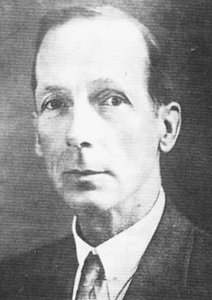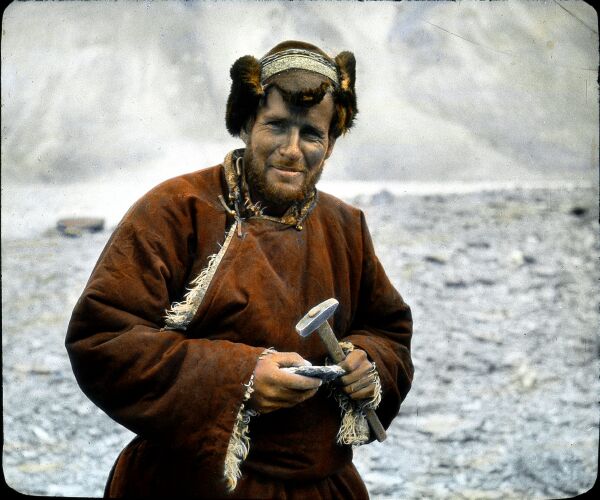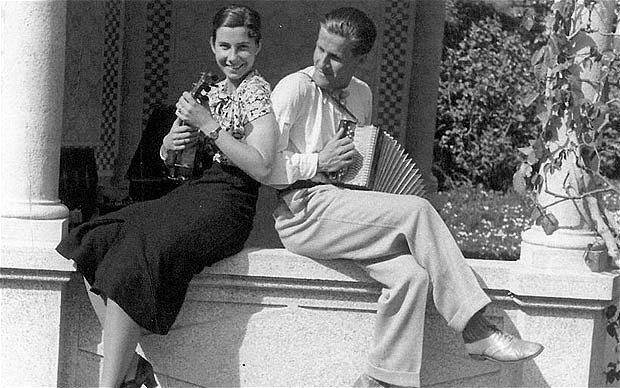<Back to Index>
- Geologist Alexander Logie du Toit, 1878
- Geologist Augusto Gansser - Biaggi, 1910
PAGE SPONSOR

Alexander Logie du Toit FRS (14 March 1878 - 25 February 1948) was a geologist from South Africa, and an early supporter of Alfred Wegener's theory of continental drift.
Born in Newlands, Cape Town in 1878, du Toit was educated at the Diocesan College in Rondebosch and the University of the Cape of Good Hope. Encouraged by his grandfather, Captain Alexander Logie, he graduated in 1899 in mining engineering at the Royal Technical College in Glasgow. After a short period studying geology at the Royal College of Science in London, he returned to Glasgow to lecture in geology, mining and surveying at the University of Glasgow and the Royal Technical College.
In 1903, du Toit was appointed as a geologist within the Geological Commission of the Cape of Good Hope, and he began to develop an extensive knowledge of the geology of southern Africa by mapping large portions of the Karoo and its dolerite intrusions, publishing numerous papers on the subject. Subsequently he mapped the entire Karoo System through the complete stratigraphy from Dwyka tillite to the basalt of the Drakensberg. He worked at a furious rate but was known for his painstaking meticulousness. This is reflected in his book "Our Wandering Continents". It still bears reading for its creative and closely argued theses in the light of the geology of the day, and is soberingly consistent with modern principles of plate tectonics.
In 1920 du Toit joined the Union Irrigation Department as water geologist, and in 1927 became chief consulting geologist to De Beers Consolidated Mines, a position he held to his retirement in 1941.
In 1923, he received a grant from the Carnegie Institution of Washington, and used this to travel to eastern South America to study the geology of Argentina, Paraguay and Brazil. As is apparent from his remarks in "Our Wandering Continents", he had not requested support for the expedition on a whim, but specifically to test his predictions of correspondences between the geology of the two continents. In the event he was able to demonstrate and follow the predicted continuation of specific features already documented in Southern Africa, into the continent of South America. Although that might perhaps seem less impressive to the layman, to the geologist this evidence was far more crushing than any arguable ex post facto matching of continental shelves.
In the light of his research du Toit published a review of the stratigraphic and radioisotope evidence from these regions that supported Alfred Wegener's ideas, A Geological Comparison of South America with South Africa (1927). His best known publication, Our Wandering Continents (1937), expanded and improved this work, and, departing somewhat from Wegener, proposed two original supercontinents separated by the Tethys Ocean, a northern/equatorial Laurasia and a southern/polar Gondwanaland.
In 1933, du Toit was awarded the Murchison Medal by the Geological Society of London, and in 1943 became a Fellow of the Royal Society. In 1949, the year after du Toit's death, the Geological Society of South Africa inaugurated a biennial lecture series in his honor that continues to the present day. In 1973, a 75 km crater on Mars (71.8°S, 49.7°W) was named "Du Toit" in recognition of his work.

Augusto Gansser - Biaggi (October 28, 1910 - January 9, 2012) was a Swiss geologist who specialized in the geology of the Himalayas. He was born in Milan.
His geological researches were global in scope:
- East Greenland (1934), a 4 month expedition under Lauge Koch;
- Himalaya (1936), a 8 month expedition under Arnold Heim;
- Colombia (1937 - 1945, for Shell);
- Trinidad (1947 - 1950, for Shell);
- Iran (1951 - 1958, chief geologist of the National Iranian Oil Company).
He got the Tibetan variant of malaria at the First Swiss Himalaya Expedition, and thereafter a lifelong resistance. He circumambulated Mount Kailash disguised as a pilgrim, discovering at the foot of the mountain the origin of one rock seen in the Indian part of the Himalayas and a sensation: seafloor rocks on its South side (ophiolites). Later on, he interpreted this Indus - Yarlung - Tsangpo Suture Zone (ISZ) as the border between the Indian and the Eurasian Plate.
Iran: using his field notes and relief pictures taken by the Iranian Air Force, he chose a 50x 12 km area. Four drillings were not able to go through a huge salt and gypsum layer. Only Number 5 was successful, the largest known 'wildcat' oil gusher, North of Qom (Iran) on 26 August 1956 (3,000 m deep, 80,000 tons oil/day). The gas got lighted up on 13 September, sometime later the well closed itself.
From 1958 until 1977, he was professor of Geology at the University and the Swiss Federal Institute of Technology in Zurich, from where he carried out several researches in the Himalayas (Nepal, India and Bhutan). There were five expeditions between 1963 and 1977 to Bhutan. In 1980 and 1985 he was invited by Deng Xiao Ping to Tibet.
After the first Himalayan expedition he married Linda Biaggi (Toti) from Lugano. The family had two sons and four daughters: Ursula (1941), Mario (1943), Luca (1945), Manuela (1949), Francesca (1956), Rosanna (1959). He named Pico Toti, Sierra Nevada del Cocuy (Colombia) after his wife following their joint first ascent. She died in 2000 (Alzheimer's disease). Gansser - Biaggi turned 100 on 28 October 2010.
